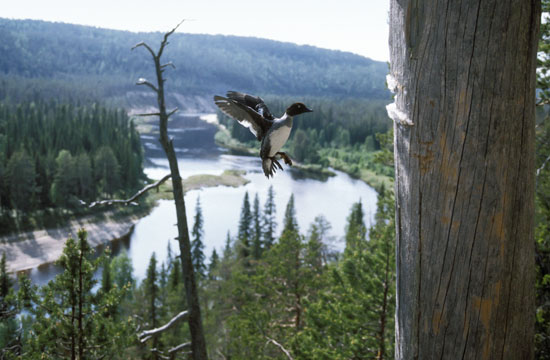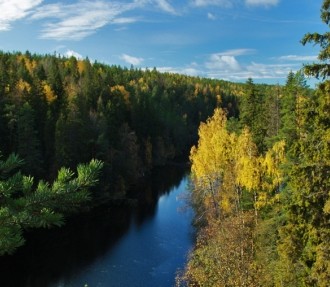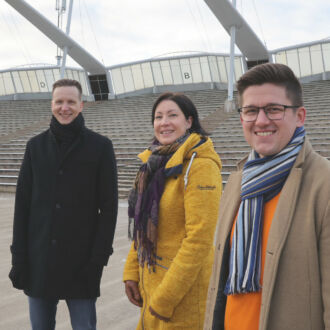Would there be wealth in Finland without forests? Part two of our three-part series continues our survey of the forest industry and its future, this time from a different perspective: We look at the sustainability and non-industrial value of forests.
Despite tough competition and increased efficiency, environmental concerns are of ever-increasing importance to the forest industry. Modern consumers are concerned about the origins and manufacturing methods of the goods they use.

Finland’s Forest Act is crucial to safeguarding the biodiversity of the forest environment. Photo: Hannu Hautala/VisitFinland
In Finland, the forest industry only uses raw materials from “certified resources” – forests where sustainability has been taken into consideration.
The certification of the origin and supply chain of wood is becoming increasingly essential as the industry becomes ever more global. More than 95 percent of Finland’s commercially utilised forests are certified, which means practically all forests outside government-ordained conservation areas. By comparison, less than 10 percent of the world’s forests are certified.
Finnish companies want to follow certification rules in their projects abroad, as well, whether they occur in Latin America, China or elsewhere.
Forests mean more than just profit

The legal concept of “every person’s right” means that people can hike and pick berries and mushrooms almost anywhere in Finland, no matter who owns the forest land. Photo: Riku Pihlanto/VisitFinland
Modern forestry aims to combine three elements: economic, ecological and recreational.
Although almost 90 percent of Finland’s forest land is zoned for potential commercial use, ecological and societal viewpoints are not neglected. Forests also have aesthetic value.
Two-thirds of Finnish forests are owned by private citizens. They naturally want to take good care of their personal property and utilise it in many ways besides growing trees to serve the forest industry. They want to hike, pick berries, hunt, ski, go camping and participate in other forms of recreation. The forests are dotted with lakes (Finland has 188,000 of them) where people can swim, fish, go boating and, in the winter, ice-skate.
Finland’s Forest Act prescribes how and where felling may be carried out. This law is crucial in safeguarding the biodiversity of the forest environment. There also is a voluntary Forest Biodiversity Programme, known by its Finnish abbreviation, METSO.
This programme allows private forest owners to protect valuable wilderness from felling and receive compensation payment that covers the timber value of the area.
By Vesa Kytöoja, January 2013





